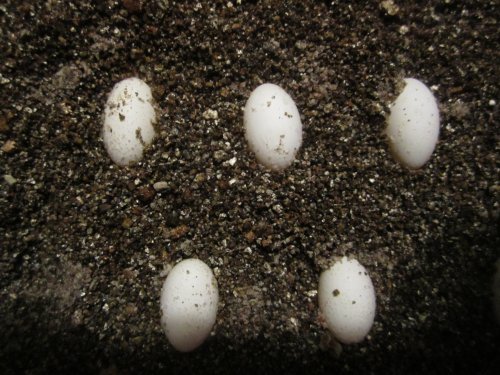My 9 month old female panther chameleon mated a few weeks ago then layed eggs only 13 days later. Was mating too late for these eggs to be fertile? She layed 27 eggs and so far 5 eggs have turned moldy (10 days after laying).
I have been following the recommendations of an article stating to keep the eggs in vermiculite in a sealed tupperware container. Should eggs be kept in a sealed container or should they have ventilation? Are my eggs molding because they are not fertile or am I incubating them improperly? I have decades of experience keeping chameleons as pets, but this is my first attempt at breeding. Any feedback from someone with more experience breeding would be appreciated.
I have been following the recommendations of an article stating to keep the eggs in vermiculite in a sealed tupperware container. Should eggs be kept in a sealed container or should they have ventilation? Are my eggs molding because they are not fertile or am I incubating them improperly? I have decades of experience keeping chameleons as pets, but this is my first attempt at breeding. Any feedback from someone with more experience breeding would be appreciated.


